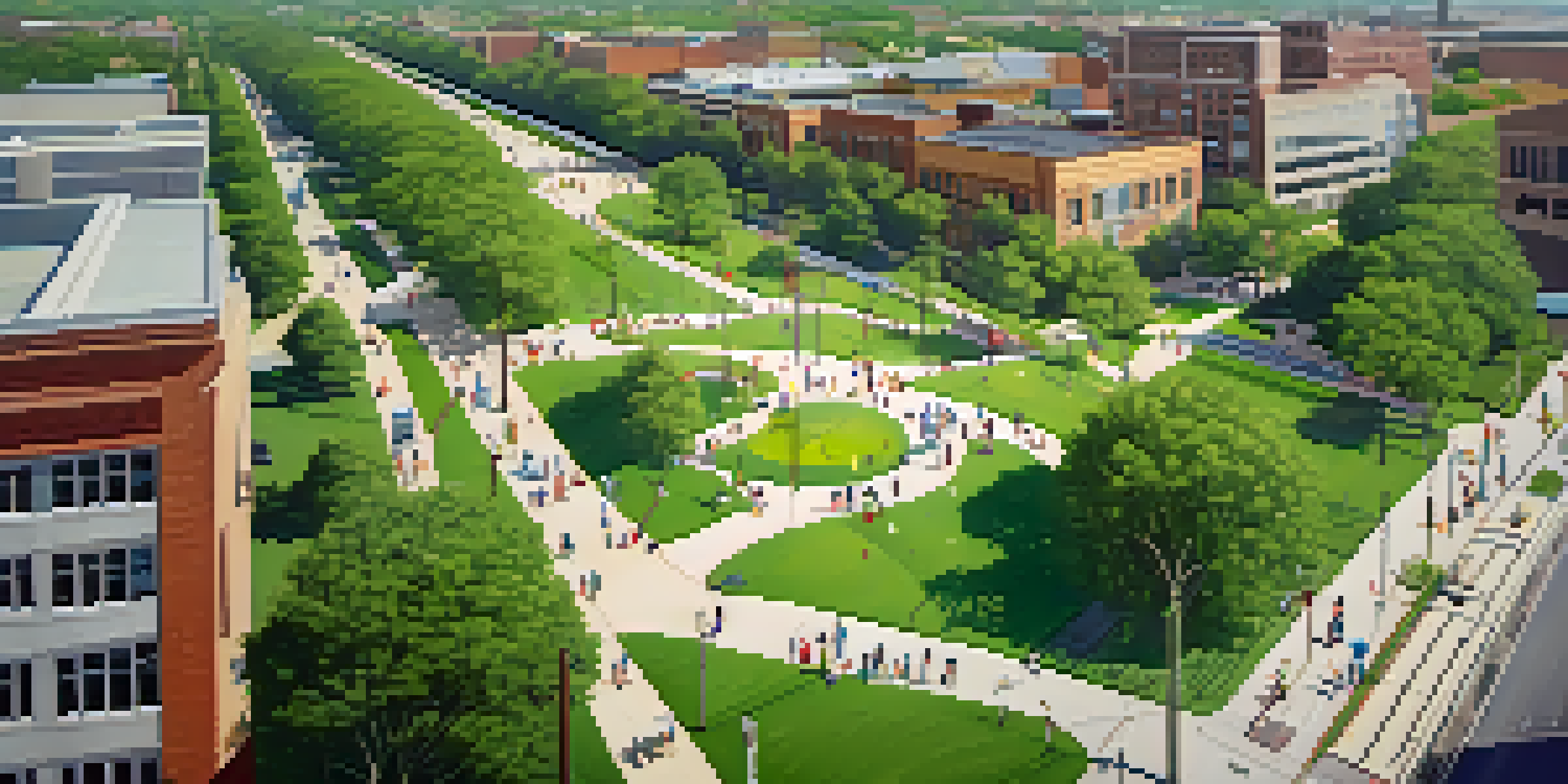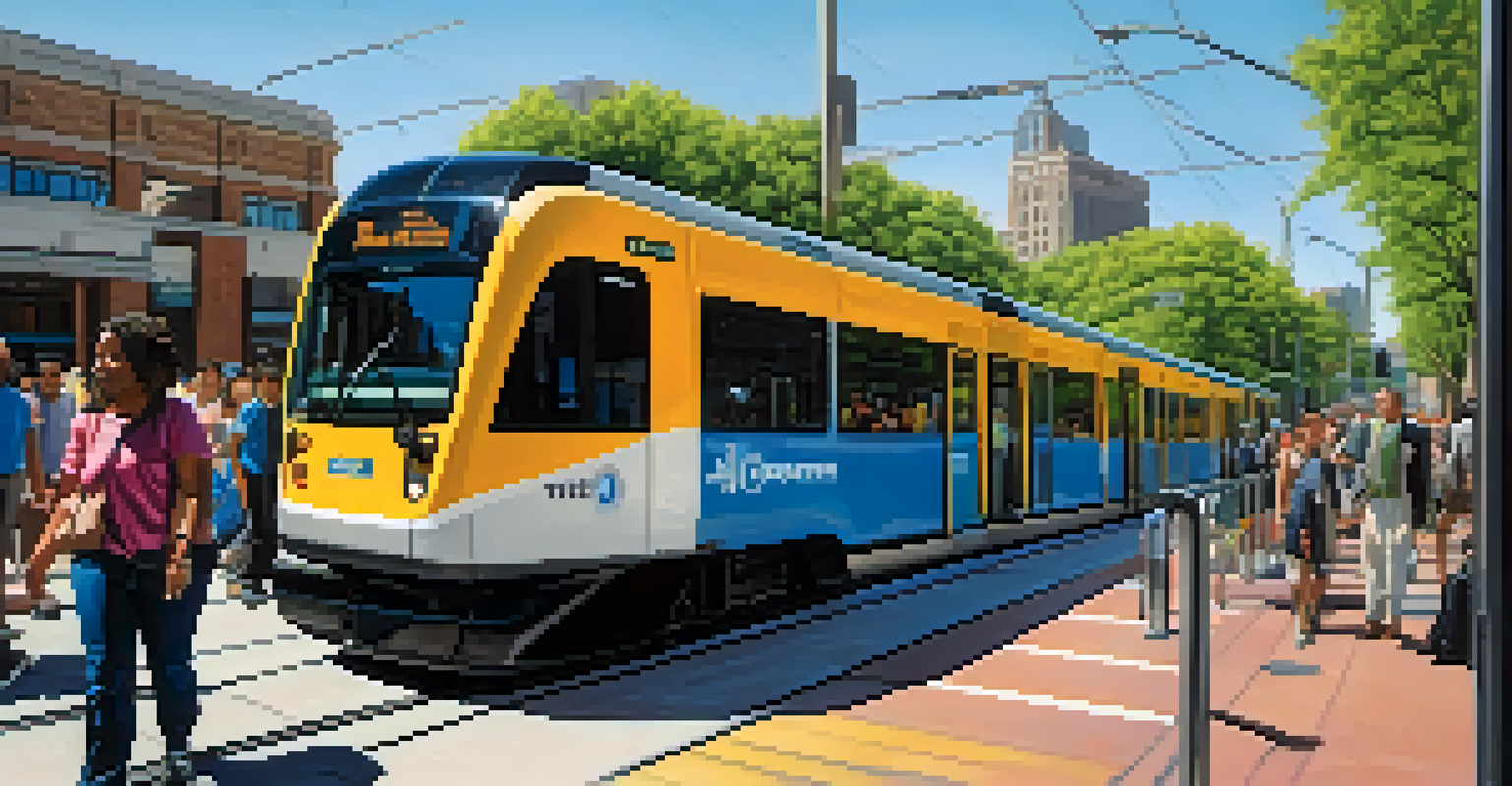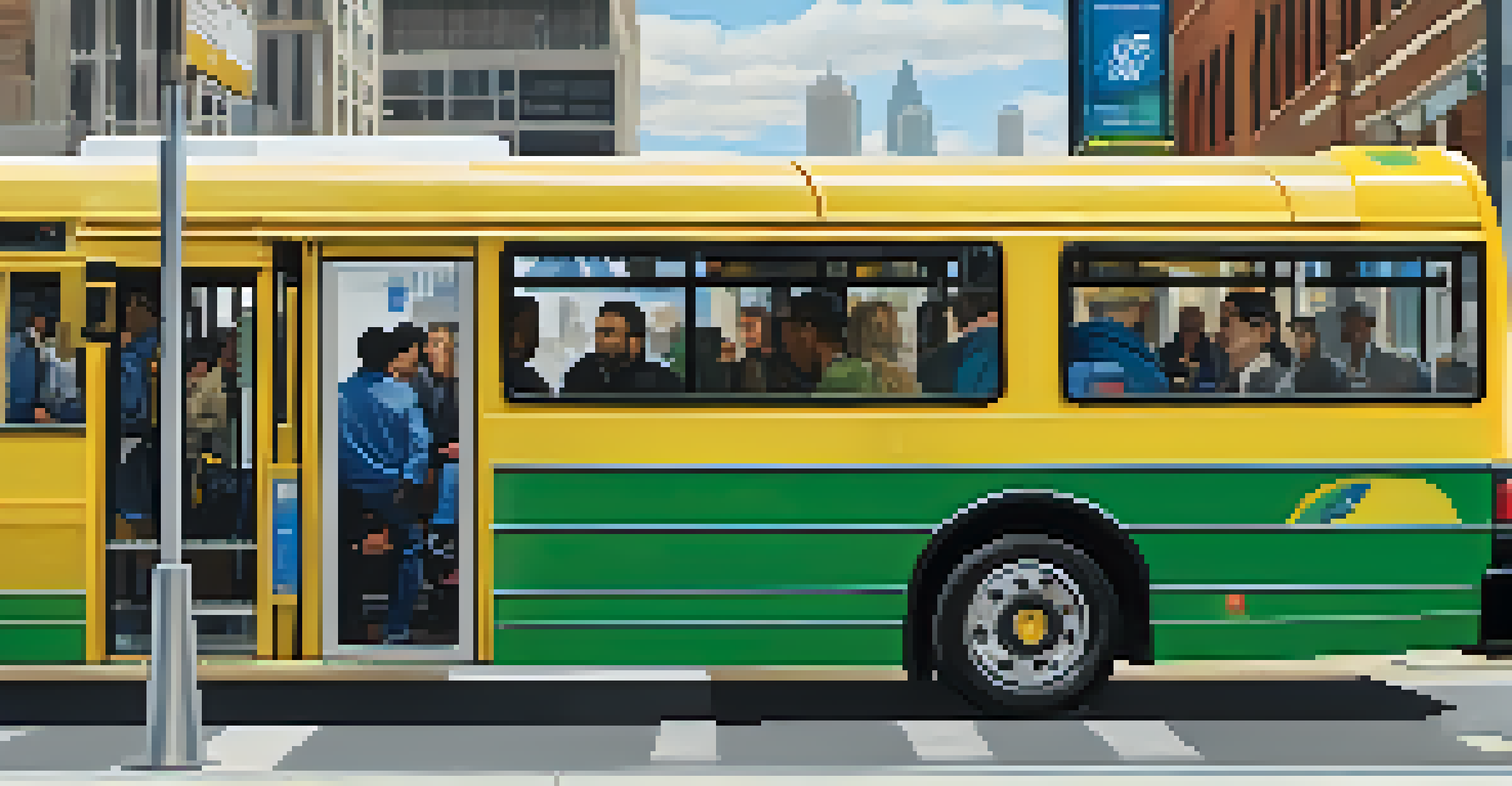Public Transportation in Dallas: An Eco-Friendly Choice

Understanding Dallas's Public Transportation System
Dallas boasts a comprehensive public transportation system that includes buses, light rail, and streetcars. The Dallas Area Rapid Transit (DART) operates these services, making it easier for residents and visitors to navigate the city without relying on cars. By using public transportation, you can reduce traffic congestion and lessen your carbon footprint.
Public transportation is a vital part of any sustainable city. It connects people to jobs and opportunities while reducing the carbon footprint of the community.
The DART system connects various neighborhoods and key destinations, such as downtown, the airport, and popular entertainment areas. With frequent service and a user-friendly schedule, getting around is not only convenient but also encourages a more sustainable way of living. This accessibility helps to foster a community that values eco-friendly practices.
Moreover, public transportation is often significantly cheaper than owning and maintaining a car. By choosing to ride the bus or train, individuals can save money while contributing to a greener environment. It's a win-win for both your wallet and the planet!
The Environmental Benefits of Public Transit
Public transportation plays a crucial role in reducing greenhouse gas emissions. According to studies, buses produce significantly fewer emissions per passenger than private vehicles, contributing to cleaner air in urban areas. By reducing the number of cars on the road, public transit can help combat climate change and improve overall air quality.

Additionally, public transit reduces the need for extensive parking spaces and road infrastructure. This can lead to more green spaces and parks in urban areas, enhancing the quality of life for residents. Imagine walking through a city filled with lush parks instead of concrete parking lots; that’s the vision public transportation helps create.
Benefits of Public Transit
Public transportation reduces traffic congestion, lowers greenhouse gas emissions, and saves money for individuals and communities.
By embracing public transit, cities can also promote sustainable growth. As more people choose to ride buses and trains, urban planners can focus on developing walkable neighborhoods and enhancing public spaces. This shift not only benefits the environment but also creates vibrant communities where people want to live and work.
Economic Advantages of Using Public Transportation
Riding public transportation can save you money on fuel, maintenance, and parking costs. The average American household spends thousands on car ownership each year, whereas utilizing public transit can significantly reduce these expenses. This financial relief can be especially beneficial for low- to moderate-income families.
The best way to get around is to take transit. It's cheaper, it helps reduce traffic, and it's better for the environment.
Moreover, investing in public transportation can stimulate local economies. When cities allocate resources to improve transit options, they often see increased business activity. More affordable and reliable transportation means that people are more likely to visit local businesses, further enhancing community prosperity.
Additionally, public transportation creates jobs, both directly and indirectly. From transit operators to maintenance workers and even those in related industries, a robust public transit system generates employment opportunities. Supporting public transportation not only benefits the environment but also contributes to economic growth.
How Public Transportation Reduces Traffic Congestion
One of the most immediate benefits of public transportation is the reduction of traffic congestion. With more people choosing to ride buses or trains instead of driving, the number of vehicles on the road decreases, leading to smoother traffic flow. This not only makes commuting faster but also less stressful for everyone on the road.
Furthermore, less congestion means fewer accidents and less wear and tear on road infrastructure. Cities can save money on road repairs and maintenance, allowing those funds to be redirected towards improving public transit services. It’s a cycle that promotes better transportation for all.
Economic Growth Through Transit
Investing in public transit stimulates local economies by increasing business activity and creating job opportunities.
Imagine a morning commute where you can relax on a bus or train instead of sitting in bumper-to-bumper traffic. By choosing public transit, you can reclaim that time for yourself—whether it's reading a book, catching up on work, or simply enjoying the view. This shift not only benefits individual commuters but also enhances the overall commuting experience in the city.
The Role of Technology in Modernizing Public Transit
Technology is playing an increasingly vital role in enhancing public transportation systems. In Dallas, apps and real-time tracking systems make it easier for riders to plan their journeys and stay informed about service updates. This kind of convenience encourages more people to choose public transit over driving.
Moreover, advancements in eco-friendly technologies, such as electric buses, are helping to reduce the environmental impact of public transportation. By incorporating cleaner energy sources, cities like Dallas are making strides toward achieving sustainability goals while improving the transit experience for riders.
As technology continues to evolve, we can expect even more innovative solutions to emerge in the public transit sector. From contactless payments to improved safety features, these developments are designed to create a seamless and enjoyable experience for all passengers.
Community Engagement and Public Transit
Community engagement is essential for improving public transportation systems. In Dallas, local residents have opportunities to provide input on transit plans, ensuring that services meet the needs of the community. This collaborative approach helps create a public transit system that is not only efficient but also inclusive.
Furthermore, community-driven initiatives can raise awareness of the benefits of public transportation. Events such as transit fairs or educational workshops can help residents understand how to navigate the system and the positive impact it has on the environment. When people feel informed and involved, they are more likely to utilize public transit.
Community Engagement Matters
Involving local residents in transit planning fosters a public transportation system that is efficient, inclusive, and well-supported.
By fostering a sense of ownership, communities can become advocates for public transit. This grassroots support can lead to increased funding and resources, ultimately creating a more robust and sustainable transportation network that benefits everyone.
Taking the First Step: Choosing Public Transit
Deciding to use public transportation is a significant first step towards a more sustainable lifestyle. By opting to ride the bus or train instead of driving, you’re making a conscious choice to reduce your carbon footprint. Every small action, when multiplied by thousands of individuals, can lead to substantial environmental benefits.
To get started, consider planning your routes ahead of time. Familiarize yourself with the DART system and explore the different options available to you. Many resources, including apps and websites, can help you navigate schedules and find the best routes for your needs.

Finally, encourage friends and family to join you on this eco-friendly journey. By sharing your experiences and the benefits of public transit, you can inspire others to make the switch. Together, we can create a culture of sustainability that values public transportation and prioritizes our planet's health.